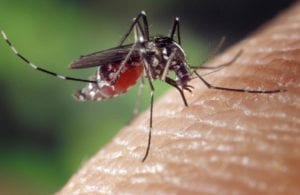Eastern Equine Encephalitis (EEE)
What is Eastern equine encephalitis?
Eastern equine encephalitis (EEE) is a rare condition that can cause brain infections. It is most common in the Gulf or Eastern states, but there are only a few reported cases annually. Mosquitoes transmit this disease, so preventing bites is a good way to prevent the disease.
What are the symptoms of Eastern equine encephalitis?
Symptoms typically appear four to ten days after being bitten. Symptoms include:
- Chills
- Fever
- Arthralgia
- Myalgia
- Fatigue
- Headache
- Vomiting
- Diarrhea
- Drowsiness
- Seizures
- Changes in behavior
- Coma
This disease can result in brain infections, including meningitis and encephalitis. These complications result in approximately ⅓ of affected individuals’ fatalities.
What causes Eastern equine encephalitis?
Mosquitoes transmit this disease, but they typically infect birds rather than humans. This is why EEE is so rare. Horses can also be affected, but they do not typically infect humans.
How is Eastern equine encephalitis diagnosed?
Doctors will diagnose EEE based on symptoms, where they have traveled, and the activities they have been doing. Arboviral testing will then be used to confirm a diagnosis, and in some cases doctors will utilize molecular testing.
What are the treatments for Eastern equine encephalitis?
There is no vaccine or treatment for humans, although a vaccine does exist for horses. Treatment will be symptomatic.
Protecting oneself from mosquito bites is the best form of prevention, and this can be done through the use of insect repellant, wearing long sleeves and pants, and taking steps to control mosquitoes both inside and outside.
Where can I find out more about Eastern equine encephalitis?
Eastern Equine Encephalitis (EEE) Articles

Two Cases of Eastern Equine Encephalitis (EEE) Identified in Polk County, FL


Eastern Equine Encephalitis Discovered in Mercer County, PA

Mosquito-Spread Eastern Equine Encephalitis Sees Outbreak in Parts of Northeast USA







